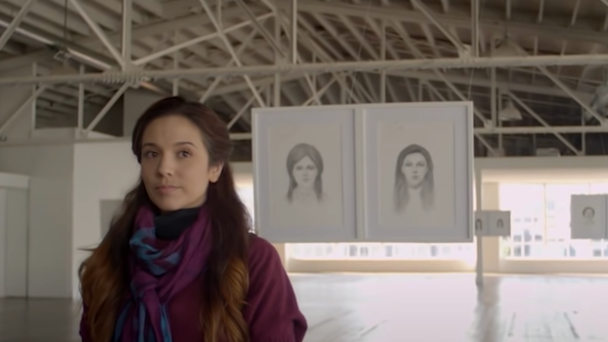Why Dove’s ‘Real Beauty’ is R/GA CCO Tiffany Rolfe’s favorite campaign ever
The Drum asked top creatives to pick one campaign that resonated with them. It certainly wasn’t an easy choice for some, but for R/GA chief creative officer Tiffany Rolfe, the choice was clear. Here’s why Dove’s ‘Real Beauty’ continues to rise above the rest.

It’s hard to choose a favorite piece of work. Do I choose work that I made? Or work that made me laugh or maybe cry? Instead, I chose a campaign I’ve been following since the beginning of my career. I had nothing to do with it but it’s still incredibly meaningful to me professionally and personally, especially as a woman. And it’s more relevant considering the context we are in – where for the first time I feel like women’s rights could be going backwards. This has gotten me fired up.
So when I, and a few other advertising leaders, were recently asked to share our knowledge at a conference for the House Democratic Caucus, where Nancy Pelosi and Joe Biden were in attendance, I couldn’t say no. We did a presentation on ‘Effective Messaging.’ I’m not deep in politics, and I don’t attempt to understand all of the complexities of our government, but I do know a thing or two about building brands and powerful messages.
We were there to give them guidance on how to simply articulate what they stand for in a way that would resonate with voters. We needed to bring a case study to illustrate how simple, meaningful and emotional messaging could elevate their message out of the weeds of product details (or policies, in their case) and get to the heart of what they stand for. We needed an example that would inspire them and demonstrate the power of a message that truly connects with people. We shared Dove’s ‘Real Beauty’ campaign.
This work was based on a profound (and sad) insight: That “only 2% of women around the world consider themselves beautiful.” This simple truth gave them a mission to power the shift of Dove from a popular soap bar ‘with a quarter moisturizing lotion,’ to a beloved beauty brand that empowers women to feel beautiful in their skin. It launched with the ‘Real Beauty’ message and the simple act of showing what real beauty looks like in all its forms. Today, it might not seem like a big deal to show woman of all ages, races and body types unretouched, but in 2004 it was revolutionary. I had worked with fashion and beauty clients and had many ideas killed that attempted to push into this space.
Dove fully embraced the tension of the category, and it met culture head on. There was a growing backlash against the objectification of women and impossible beauty standards. This campaign was for any woman who has felt demoralized or objectified by imagery in an unrealistic and underrepresented beauty category.
I was a bit nervous comparing the Democratic Party to a bar of soap, but by the end, dozens of congresswomen and men were nodding (some tearing up) through the case study. They got it. And they were ready to find that emotional connection as well.
‘Real Beauty’ had an impact on them – just as it has for Dove. For 15 years Dove has released many thought-provoking iterations of the campaign that has flowed into a sort of social movement challenging the status quo around women’s beauty. It’s an idea that can be reinterpreted for different cultures and communities and can change with the context of our times – as witnessed with their recent work featuring pandemic nurses or taking on the toxicity in social media.
And while some may praise it as ‘just’ cause marketing, Dove’s sales went from $2.5bn to $4bn, becoming the number one preferred soap in the US in 2019. They even discovered that both women and men exposed to the campaign became much more interested in buying anything the brand was selling, lifting the sales of all products and categories. But even more importantly, it lifted the confidence of women and changed culture for the better – paving the way for other brands to feature plus-size models and models with vitiligo, open eyes to the beauty of musicians such as Adele and Lizzo, or make 60 the new 40. It lifted culture up by democratizing beauty. So maybe a bar of soap and the Democrats have even more in common than we think.
